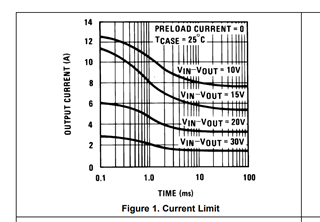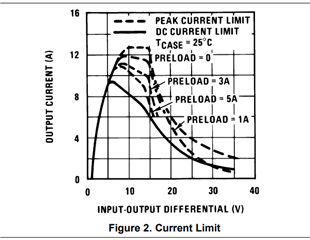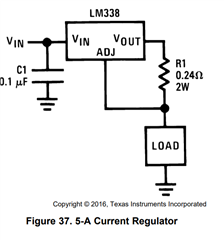Other Parts Discussed in Thread: LM1084, LM317
I need to have a 5A constant current and I am thinking of using the circuit in Figure 37, input voltage is ~28V. My load is quite far a way at the end of a cable (say 100ft). Can the LM138/38 capable of driving such a long cable assuming the voltage drop over the cable such that the voltage at the load is no more than 9V from the input???
(by the way, in your Figure 37, if it is a 5A constant current, shouldn't the Resistor power be much higher than 2W? V*I = 1.25V*5A = 6.25W ?)
thanks,
-Long




